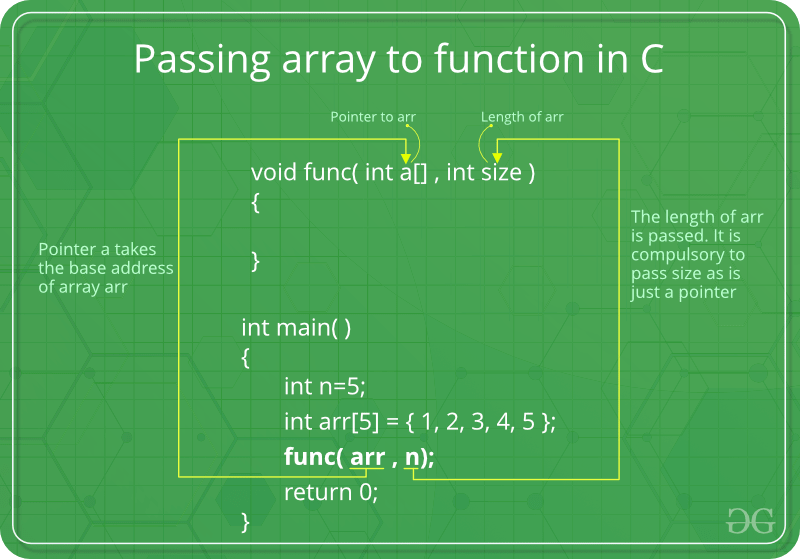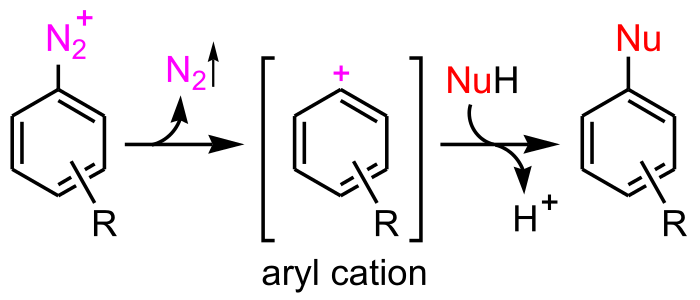The StringBuilder class manages reminiscence to accommodate strings in it. For this purpose, the category types an outsized char array. This is regularly stuffed with the handed values. The preliminary measurement of the array might be specified. When including strings, the array is mechanically enlarged if necessary. The StringBuilder class has similar to the String.Concat perform the improvement that solely single reminiscence should be reserved and it usually is utilized for a number of string concatenations.
But the ensuing acquire in efficiency can be lowered by the required inner administrative operations. This could even lead to a diminish of the execution speed. Adding strings is a standard operation in C# and .NET. The code examples exhibit numerous strategies to concatenate strings, insert string, append string, and merge strings applying C# String class and its methods. StringBuilder is very really helpful if in case you could have numerous hundred string concatenation operations in your code. StringBuilder just isn't really helpful for a number of string concatenation operations.
After the primary take a look at and the regarded code optimization by the compiler, of course, the query arises how the execution occasions behave when variable strings are used. Therefore, the take a look at program has been modified and the person concatenation capabilities have been supplemented with variable string values. The code under exhibits the take a look at program, once more in a shortened adaptation with no timer and output. The variables value1 and value2 are perform parameters. During the measurement the perform name was accomplished by passing the values "abc" and "def". The following code makes use of the Append approach to the StringBuilder class to concatenate strings with no the chaining result of the + operator.
String.Concat takes a bunch of strings and concatenates them together, plain and simple. There are numerous overloads - some take strings, some take objects , some take arrays of objects or arrays of strings. This signifies that no further copying is concerned - the info is copied as soon as into the brand new string, which is of precisely the perfect length. Surprisingly, the StringBuilder has reached the primary place.
This class appears to work very efficiently, so the interior administration overhead is compensated already in these instance the place just just a few strings must be concatenated. The + operator is now behind the String.Concat function. Most likely, this time big difference will develop with rising variety of strings. The rationalization for the brief execution time of the + operator is simple. He acknowledges that mounted strings must be concatenated and at once changed them by a corresponding composite string. An evaluation of the IL code shows, the compiler converts the road „Hello" + „" + „World" + „!
A concatenation of mounted strings is thus already been changed by a concatenated string at compile time. This explains the excessive execution velocity within the assessment test. After the idea we would like we execute slightly useful take a look at now, on the way to check the efficiency of the person functions. In a primary test, 4 mounted strings are concatenated. The execution time is measured with the Stopwatch class.
The code under exhibits a shortened adaptation of the experiment program. For readability the features for time measurement and end result outputs are removed. Next, we will concatenate string objects through the use of .Net framework's String Class String.Concat() method. This String.Concat() approach concatenates a number of circumstances of String, or the String representations of the values of a number of circumstances of Object.
Let's check out among the useful options in C# named string interpolation which offers an alternative choice on tips on how to insert variable values right into a string. C# 6.0 launched interpolated strings by way of a brand new Roslyn compiler in Visual Studio 2015 and .NET 4.6 simply to speed up your coding skill. Now it is easy to insert a number of expressions immediately within the string literal simply by including the $ prefix to output the lead to a properly formatted manner. When you employ interpolated strings, the compiler interprets them to String.Format techniques beneath the hood.
As a result, interpolated strings are much much less useful than instantly utilizing the format method. However, interpolated strings are extra readable and fewer error-prone than another earlier techniques of formatting strings. The goal of this text is to familiarize you with the C# String Concatenation. You will study distinct c# techniques like String.Concat(), String.Join(), String.Format(), and String Interpolation to concatenate strings. The Concat technique is the bread and butter of string concatenation. It's is used each explicitly and by the compiler to concatenate strings.
It genuinely highly effective and versatile, and it has thirteen completely different overloads. These operators are acquainted to any one doing software program programming, even these simply beginning. They are straightforward to make use of and intuitive since all of us did math in school. + operator seriously is not overloaded by the String class and if you're concatenating string variables it's translated to String.Concat() within the IL. It means each time you employ one in each of many String class methods, regardless of should you employ the identical variable or a brand new variable, a brand new string object is created in memory.
That means, a reminiscence area is allotted for that new string in your pc memory. The extra string techniques you employ to control strings, the extra reminiscence area will probably be allotted in memory. That means in a string manipulation heavy code, if strings usually are not used wisely, it might lead on to some critical app efficiency issues. String.Join() process concatenates the weather of an array or the members of a collection, applying the required separator between every factor or member.
The array or the gathering will be any info sort which includes numbers and objects. String.Join procedure additionally lets you concatenate string gadgets of any info sorts with a range. On my laptop, this executes too quickly for the rudimentary timing mechanism I'm making use of to offer me any smart results. Changing to one million iterations (i.e. ten occasions what the primary program took just about ten seconds to do), it takes about 30-40ms.
The time taken is roughly linear within the variety of iterations (i.e. double the iterations and it takes twice as long). It does this by avoiding pointless copying - solely the info we're in fact appending will get copied. StringBuilder maintains an inner buffer and appends to that, solely copying its buffer when there's not room for any extra data. I'm fairly yes from the second I started out programming in C#, I received informed to not concat strings making use of the plus operator. But right right here it wasn't so bad… Unfortunately I tried to seek out the supply code like I've finished above however to no avail.
So I needed to go on intuition to attempt to diagnose the issue.. The benchmarks right right here give some info information factors about what statements are most efficient. In many programs, you'll append or concat strings. The C# Concat() process is used to concatenate a number of string objects. There are many overloaded strategies of Concat(). C# and .NET give varied alternatives to concatenate strings.
In the code examples listed on this article, we noticed tips to make use of these alternatives to concatenate strings. Therefore earlier than concatenating string making use of that operator, the compiler should determine regardless of whether to make use of it as a math operator for addition or use it for string concatenation. In this text I want to debate the alternative techniques to concatenate strings. I clarify you the essential differences, give indications when to make use of which probability and present you a small efficiency comparison. StringBuilder.Append method might be utilized to append a number of strings effectively. This is a desired answer over the + operator for concatenating greater than three strings.
To commence employing string interpolation to format your strings, it's essential prefix a string with '$' character. After that, you would like to use braces to insert variables in such a string. Since braces are a exotic character, you would like to use double braces to write down a brace within the interpolated string. In this fast tutorial, we're going to speak about alternative techniques to concatenate strings. Splitting and becoming a member of strings are generally used operations in essentially any real-world application, so let's see how we will concatenate strings by method of some examples. String.Concate() process concatenates two strings, two objects, and two arrays of strings and mixtures of them.
String interpolation is a technique to concatenate variables as component of a string. Syntax of string interpolation starts offevolved with a '$' image and code variables are inside a bracket . If you only have a number of concatenations to do, and also you actually need to do them in separate statements, it does not truly matter which method you go.
Which method is extra effective will rely upon the variety of concatenations the sizes of string involved, and what order they're concatenated in. If you actually feel that piece of code to be a efficiency bottleneck, profile or benchmark it equally ways. In this post, we have now discovered the string concatenation strategies in c#. The new article for c# developer to discover methods to concatenate Char with String. We can mix characters to strings with or with none method.Let's see all coding.
We create a List occasion and add three string literals to it. In new variations of the .NET Framework, you may cross the List variable reference to the string.Concat method. It will concatenate all of the strings with no separator. Following is the occasion of employing theConcat() technique to append or concatenate one or morestringsand return it as a newstringin the c# programming language. This technique is used to concatenate two totally different cases of the string.
You can even use Concatenation operator(+)to concatenate strings. When efficiency is important, you must all the time use the StringBuilder class to concatenate strings. The central distinction between this instance and the prior one is that we will with ease current all of the strings which must be concatenated collectively in a single name to String.Concat. That signifies that no intermediate strings are needed.
3.We can concatenate char to string through the use of StringBuilder class and Append Method. After StringBuilder class employing dot(.) operator. The dot(.) operator is used to name Append technique and through the use of ToString technique it converts into string and merge with str variable. In C# you need to use a number of techniques to concatenate strings.
None of the attainable prospects is usually to be preferred. There are stronger or worse solutions, counting on the true use case. As predicted String.Concat is quicker than StringBuilder on this instance with few strings.
It is a number of occasions sooner than the opposite two functions. Normally the execution time needs to be increased than the time of String.Concat due to many copy operations. This is fairly simple method, all it does is concatenate strings together. It additionally has an overload which we will use to move an IEnumerable.
And finally, we additionally observed that string concatenation remains to be a wierd beast. With issues like string.Concat and string.Join doing each various issues counting on what you move in. 9 occasions out of 10 you almost certainly don't even assume there's a distinction between passing in a IEnumerable vs Params, however there is.
This approach returns a string which is the concatenation of the primary and second strings. This is how one can use Concat() approach to append or concatenate one or morestringsinto onestringin the c# programming language. This approach is used to concatenate three totally different string right into a single string. String.Format could very well be utilized when string templating is most well-liked to string concatenation. One of the circumstances the place you will want that's when the message could be localized, as instructed within the reply by kunthet.
StringBuilder is used if you want to do a variety of concatenation operations and helps decreasing the variety of middleman strings created. Deciding regardless of whether you must use a StringBuilder or a standard concatenation is probably not easy. Use a profiler or seek for related solutions on Stack Overflow. The foreach loop procedure is a standard method, utilizing which we will carry out any operation on any facts construction or facts type.
In this case, we now have used a foreach loop to concatenate two Lists together. The foreach loop will add gadgets one after the other in every iteration. In the upcoming code, we're calling the various variants of the Concat() approach to concatenate the person objects of Object class and even the objects in am Object array. 2.We can concatenate char to string through the use of StringBuilder class and Append Method. S1 is the thing of StringBuilder class , through the use of ToString approach it converts into string and merge with str variable. StringBuilder and String.Concat differ in a single important point.
When the String.Concat operate is used, all strings to concatenate could be given as parameters. By employing the StringBuilder class, these values can be added little by little by calling the add function. So this is often additionally the principle use case of the class. StringBuilder could solely be used when a number of values must be connected, however can't be laid out in a single operate call.
Otherwise, the String.Concat operate is generally preferable. Simply, we will use plus signal (+) to concatenates two or extra string objects. If we now have three strings, akin to 'first string', 'second string' and 'third string', then we will concatenates them as this manner "first string" + "second string" + "third string". Concatenation is the method of appending one string to the top of another. In C#, any two strings would be concatenated utilizing the + operator.
The results of C# string concatenation with some different style is usually a string. The string.Format process additionally turns into extra usable appending many strings here. We get thinking about StringBuilder when a number of strings are encountered. It additionally has a lot worse efficiency at this level.






































